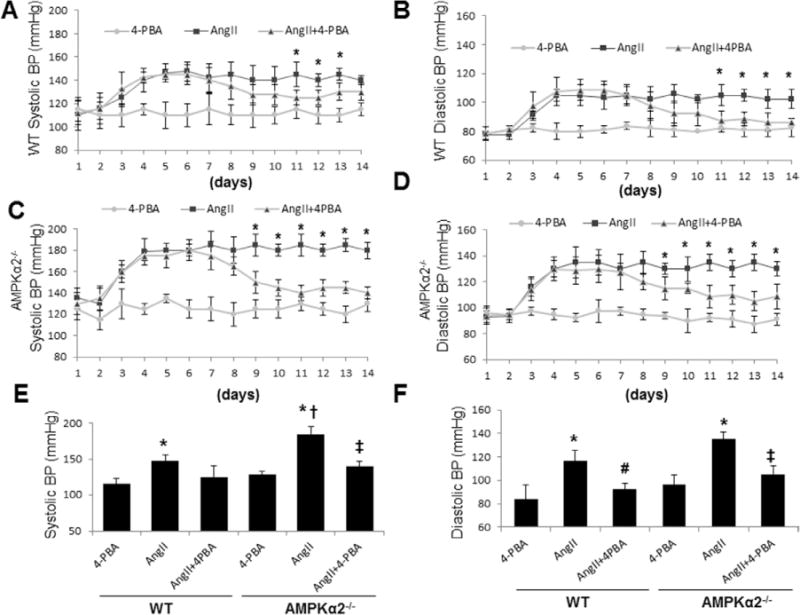Figure 7.

Suppression of endoplasmic reticulum (ER) stresses by 4-phenyl butyric acid (4-PBA) lowers angiotensin II (Ang II)–induced high blood pressure. The systolic blood pressure and diastolic blood pressure were monitored by telemetry system. Means±SEMs for each group (n=12) are presented for both AMP-activated protein kinase (AMPK) α2−/− and wild-type (WT) mice. *P<0.05 Ang II vs 4-PBA or 4-PBA plus Ang II. A and B, WT mice were treated with 4-PBA for 2 weeks after Ang II treatment for 5 days; n=10 in each group. *P<0.05 Ang II vs 4-PBA or 4-PBA plus Ang II. C and D, AMPKα2−/− mice were treated with 4-PBA for 2 weeks after Ang II treatment for 5 days; n=10 in each group. *P<0.05 Ang II vs 4-PBA or 4-PBA plus Ang II. E and F, Systolic and diastolic blood pressures in AMPKα2−/− and WT mice treated with or without 4-PBA. *P<0.05 Ang II vs 4-PBA, #P<0.05 Ang II vs 4-PBA plus Ang II, †P<0.05 Ang II in WT vs Ang II in AMPKα2−/−, and ‡P<0.05 Ang II vs Ang II plus 4-PBA. The data were analyzed by using the 2-way ANOVA for repeated measures followed by Bonferroni post hoc test.
